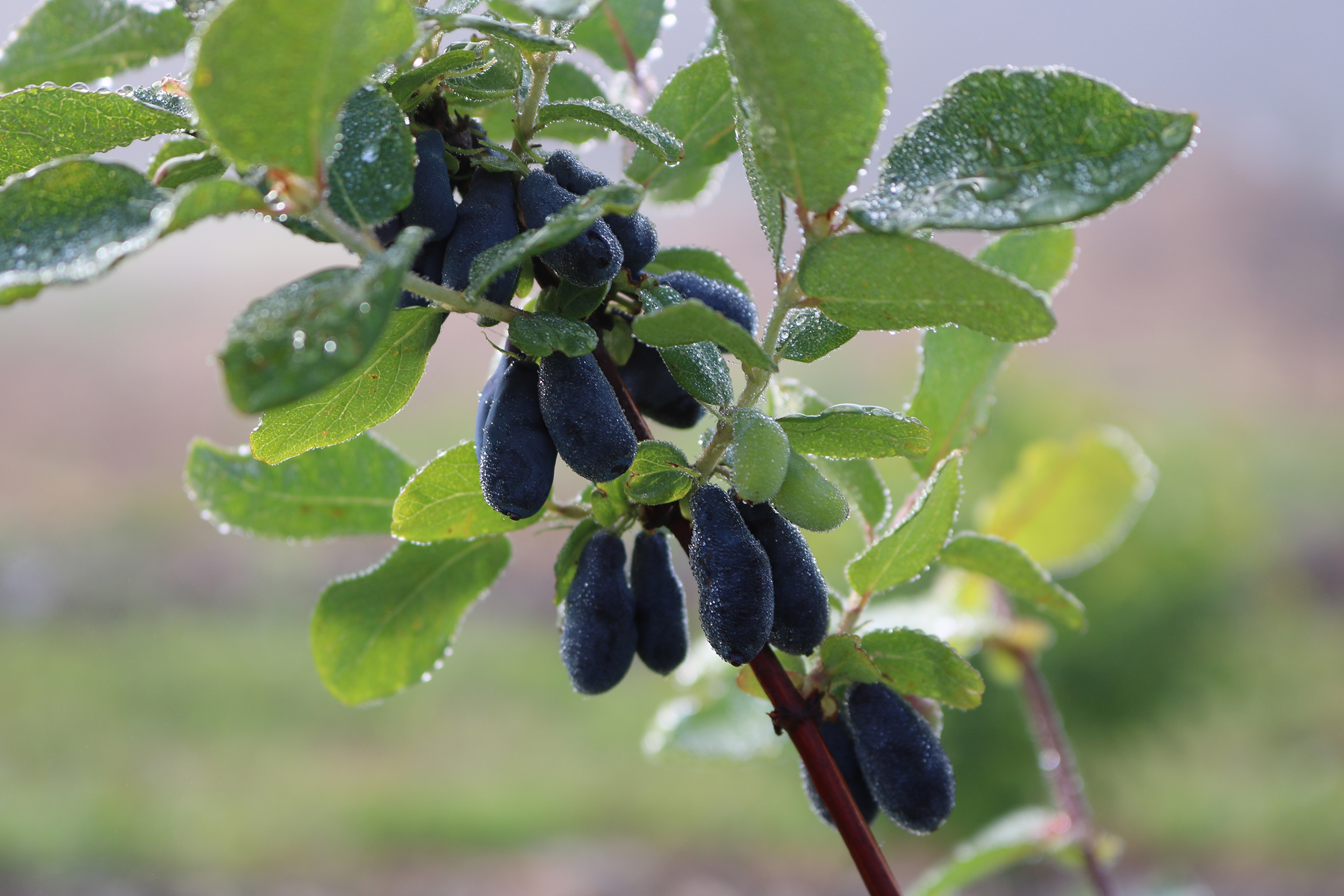Missouri growers are sweet on honey of a berry

INDEPENDENCE, Mo. — The “Miss Congeniality” of Missouri backyard fruits might be the honeyberry.
Honeyberry’s ability to thrive in conditions that often challenge blueberries makes it a promising choice for gardeners seeking a productive and low-maintenance fruit, says University of Missouri Extension horticulturist Tamra Reall. This crowned jewel of a bush grows in a variety of soils and resists disease and pests.
Reall says honeyberry is a true example of “the right plant in the right place.” It can grow in the extremes of southwestern Missouri’s rocky soil as well as the claypan soil of northeastern Missouri. It prefers full sun but can also grow in light shade. The shrub can withstand cold to minus 50 degrees.
However, it is less tolerant of Missouri’s extreme summer temperatures, says MU Extension horticulturist Patrick Byers. Honeyberry may be more suited to Missouri’s cooler northern areas than the middle and southern parts of the state, he says. A very early bloomer, it also faces risk of frost damage.
This member of the honeysuckle family is far less fickle than blueberry, which requires acidic soil. Mature bushes reach heights of 3 to 8 feet and have a 50-year life expectancy. Its fruit is reported to be higher in antioxidants than blueberry.
The thick-skinned berries are the first to bear in spring, even before strawberry. Its deep purple-blue berries are ½ to 1 inch long and are primarily cylindrical or teardrop-shaped. Berries need two to three weeks after they turn blue to fully ripen. Sweetness varies by variety, but berries taste like a refreshing, unique cross between a raspberry and a blackberry, Reall says.
Bushes can take up to five years to produce a bountiful crop, but some will produce a few berries by the second year, she says.
Byers says honeyberry has not proven to be profitable in commercial operations but is an enjoyable bush to add to backyard landscapes or diversified farms. “Honeyberry is still relatively new to Missouri,” Byer said in a press release. “We’re still figuring out the most efficient way to grow them.”
Honeyberry’s cream-colored flowers bloom early and benefit from early native bee pollinators, says Reall. Two compatible varieties are needed for cross-pollination. The fruit grows under the leaves and receives protection from rain and hail damage, although protection from birds is needed.
Honeyberry can be eaten fresh or dried or made into jams and jellies.
Honeyberry is called haskap in Japan and zhimolost in Russia.
Miss Clipping Out Stories to Save for Later?
Click the Purchase Story button below to order a print of this story. We will print it for you on matte photo paper to keep forever.

